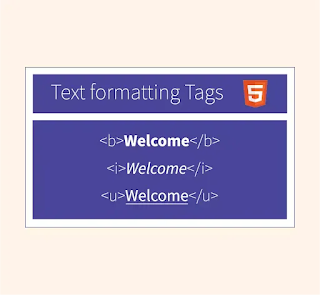INTRODUCTION
HTML stands for Hypertext Markup Language. It is a markup language used to create web pages and applications that are displayed on the internet.

What is HTML? HTML is a markup language that uses a set of tags and attributes to describe the structure and content of a web page. HTML tags are used to define different types of content such as headings, paragraphs, images, links, and more.
History of HTML HTML was first introduced by Tim Berners-Lee in 1991 as a way to share scientific documents over the internet. The first version of HTML, HTML 1.0, was released in 1993. Since then, many versions of HTML have been released, with HTML5 being the most recent and widely used version.
Why use HTML? HTML is used to create web pages and applications that can be viewed on the internet. It is an essential tool for web development because it provides a standard way of describing the content and structure of a web page. HTML also allows developers to add multimedia content, forms, and interactivity to their web pages.
Where is HTML used? HTML is used to create web pages and applications that are displayed on the internet. It is used by web developers, designers, and content creators to create websites, blogs, e-commerce sites, social media platforms, and more.
How does HTML work? HTML works by using tags to describe the structure and content of a web page. A web browser reads the HTML code and displays the web page accordingly. HTML can also be combined with other technologies such as CSS and JavaScript to create more advanced web pages and applications.
When to use HTML? HTML should be used whenever you need to create a web page or application that is displayed on the internet. HTML is also used for creating responsive designs, which means that the web page can adapt to different screen sizes and devices.
Who uses HTML? HTML is used by web developers, designers, and content creators around the world. Anyone who wants to create a web page or application for the internet needs to know HTML.
Uses of HTML
1. Creating web pages: The primary use of HTML is for creating web pages that can be displayed on the internet. HTML is used to define the structure and content of a web page, including headings, paragraphs, images, links, and more.
2. Formatting and styling: HTML can be used to format and style the content of a web page. This includes setting font styles, colors, sizes, and more.
3. Creating forms: HTML includes a set of tags that can be used to create forms on a web page. Forms allow users to input data and interact with a website.
4. Embedding multimedia content: HTML can be used to embed multimedia content such as videos, audio files, and images into a web page.
5. Creating responsive designs: HTML can be used to create responsive designs that can adapt to different screen sizes and devices. This is important for ensuring that a website looks good and functions well on all types of devices.
6. Accessibility: HTML provides a way to make web pages accessible to people with disabilities. This includes using tags to describe the structure and content of a web page, and adding attributes to images and other multimedia content to make them accessible to people using screen readers.
Test your skills!
- When was HTML first introduced and by whom?
- What is the latest version of HTML?
- What is the purpose of HTML?
- How does HTML work?
- Who uses HTML?
Answers
- HTML was first introduced in 1991 by Tim Berners-Lee.
- The latest version of HTML is HTML5.
- The purpose of HTML is to create web pages and applications that can be viewed on the internet, using a set of tags and attributes to describe the structure and content of a web page.
- HTML works by using tags to describe the structure and content of a web page, which is then read by a web browser to display the web page accordingly.
- HTML is used by web developers, designers, and content creators around the world to create web pages and applications for the internet.


No comments:
Post a Comment